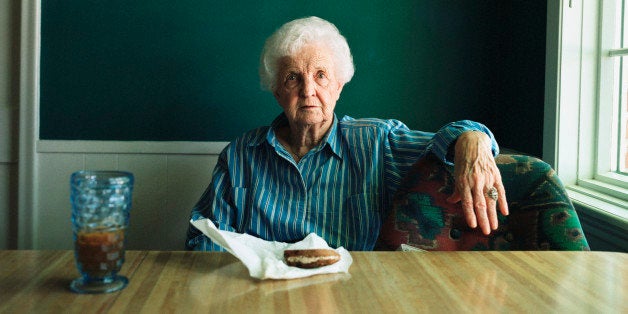
When the subject is as upsetting as older Americans going hungry, it can be tempting to use language to soften the blow.
Claire Shimabukuro of Hawaii Meals on Wheels puts it this way:
Food insecurity. Fiscal cliff. Collateral damage. Euphemisms for hunger, no money, murdered innocent bystanders. While descriptive terms often have a poetic beauty and are of importance for communication and clarity, they sometimes serve to distance us from grim realities. And sometimes grim realities seem unbearable to face, so we look away.
While Claire works to alleviate senior hunger at the local level, the national facts are stunning, too:
- Nearly one in six seniors in the U.S. is threatened by hunger.
But the most obvious factor is lack of money. Despite many federal, state and local programs that focus on alleviating poverty, this story is complex. Recent research shows that over 70 percent of those facing food hardships actually have incomes above the poverty line. To repeat: the majority of those going hungry are not technically poor but are still having difficulty getting enough to eat.
The recession has also hit older people who are still in the job market, resulting in a dramatic spike in the threat of hunger. As AARP Foundation has reported,
for all the attention on the severe economic downturn that hit our country, we don't always appreciate how tough conditions have been for older workers. The problem of senior hunger in America has deepened as the status of older adults in the job market has worsened: The unemployment rate for Americans 50-plus has doubled in just the past four years -- and people 55-plus who lose their jobs are out of work for an average of an entire year. In just two years, from 2007 to 2009, there was an increase of almost 40 percent in the number of Americans ages 50-59 at risk of hunger.
Almost half of middle class workers (49 percent) will live on a food budget of about $5 per day in retirement. Here's a simple experiment: starting today, spend no more than $35 on food and drink over the next week. Then repeat that process for the rest of your life. That is the situation that many older people will face.
This is not just a national policy issue, but a personal one as well. Are there people in your own life who may be facing hunger but are too embarrassed to ask for help? Here are some questions to ask, as framed in an excellent column by Melanie Haiken for the National Foundation to End Senior Hunger:
Are the older person's clothes not fitting properly? Are they always "about to go to the store?" Are they frequently dizzy or have dental problems? Have they stopped going out eat with friends? These are all potential warning signs that the older person is not getting enough to eat.
The challenges are daunting, but there are a number of important resources and ways for you to help:
- The Meals on Wheels Association of America represents the local delivery services, the largest system of providers of nutrition and support services directly to vulnerable seniors.
The statistics on senior hunger and the personal stories behind the numbers are shocking, but that should be a call to action. As Claire Shimabukuro in Hawaii says,
Let us not forget that, as we start the task to end senior hunger and the loneliness that we often see accompanying it, we must first define things with the most candid and stark and vivid reality, so that everyone will also see and hear and not turn away, but be compelled to join the search for solutions so that we may continue the evolution of the human race towards good and towards insuring that no one goes hungry.
We need to look senior hunger in the face and make a difference.
